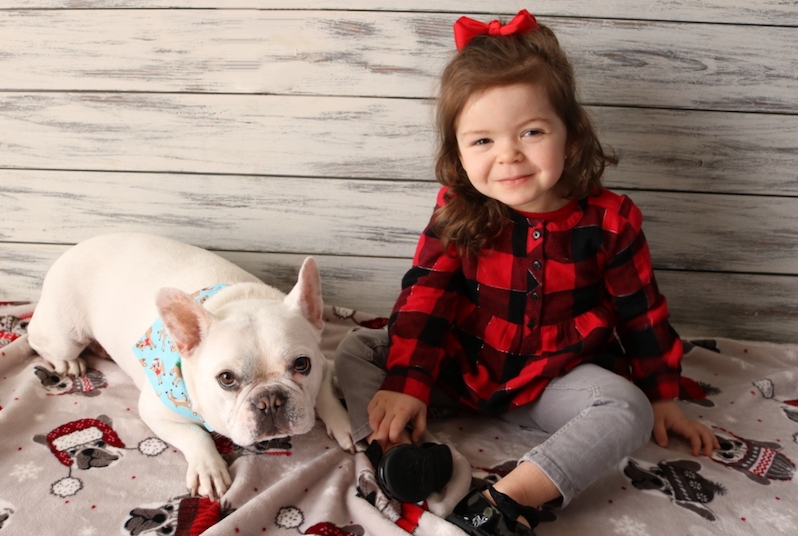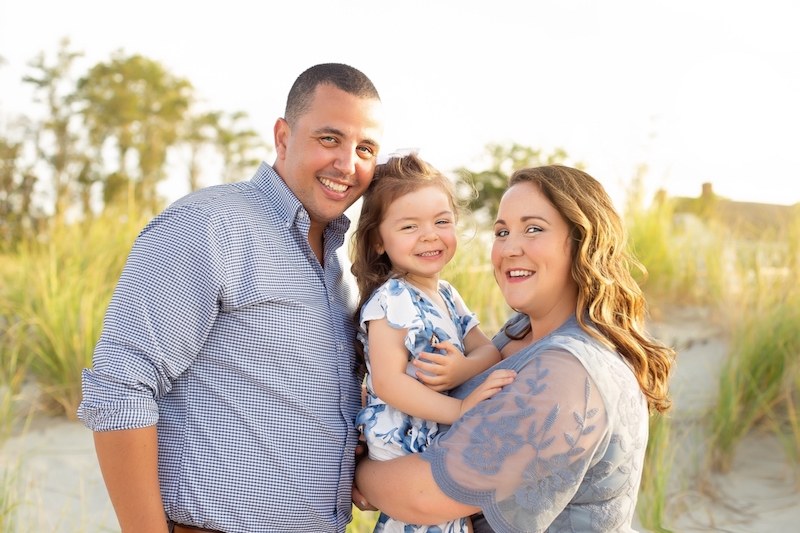Amelia makes a special connection with her EEG tech

Amelia arrived at Boston Children’s Hospital in August with a present in her small hands. The gift was for one of Amelia’s favorite people at the hospital, electroencephalographic (EEG) technician Katie Tucker. Tucker has been Amelia’s primary EEG tech since she was just 7 months old.
“We first traveled up to Boston Children’s from New Jersey in a huge snowstorm in March 2017 after requesting a second opinion,” recalls Amelia’s mom, Jenna. “That was the first day we met Katie, and Amelia just took to her like so easily. They had an immediate connection.”
Looking for a second opinion for epilepsy surgery
The family had traveled to Boston to meet with Dr. Phillip Pearl, director of the Epilepsy Center at Boston Children’s, hoping he could provide a surgical option for treating Amelia’s epilepsy they felt comfortable with.

“We had seen some other specialists in Philadelphia, and they wanted to do a full hemispherectomy,” says Jenna. This is a surgery that involves removing or disabling one half of the brain. “But we had done some research and were pushing for a partial instead, which is around the lower left temporal lobe and your occipital lobe. Dr. Pearl thought this would be a good option for Amelia.”
After surgery, a happy baby
Amelia had the surgery at 10 months old, and almost immediately turned into a different child. “Two hours after she woke up she was blowing raspberries,” says her dad, Philip. “And she was laughing and smiling, which she had never done before her surgery. When we got home, she rolled over for the first time, and then started propping herself up. She just started hitting all her milestones quickly. Now, nothing stops her.”
Since that time, the family has traveled back to Boston every three to six months for checkups — and every time Amelia needs an EEG Katie is right there by her side.

A comforting touch
“Getting an EEG is tough for a little kid,” explains Philip. “Basically, the EEG tech needs to place about 30 electrodes in specific places on her scalp.” And, because Amelia doesn’t like people touching her head, this makes the process even more challenging. “But the way Katie works with Amelia, it really comforts her,” says Philip. “She takes her time and knows how to handle her so she doesn’t freak out. She talks to her or gives her an iPad to look at and it totally takes her mind off things. With Katie, Amelia’s at ease the whole time.”

Now Jenna and Philip request Tucker every time they visit Boston for an EEG. “Nowhere else will you get that kind of accommodating service,” says Jenna. “Every other hospital we’ve been to we’ve seen different doctors and different technicians every single time. Here in Boston, you see the same people every time, whether it’s Dr. Pearl or Katie, which is why we drive five hours to get here. It’s just a super personal touch. They know Amelia and she knows them. It’s 100 percent worth it.”
Learn more about the Epilepsy Center.
Related Posts :
-

“Princess June” reigns supreme over Rasmussen syndrome
What do you call a “girly” 5-year-old who adores dolls and frilly nightgowns? If you’re one of June Pelletier’...
-

What orthopedic trauma surgeons wish more parents knew about lawnmower injuries
Summer is full of delights: lemonade, ice cream, and fresh-cut grass to name a few. Unfortunately, the warmer months can ...
-

The thalamus: A potential therapeutic target for neurodevelopmental disorders
Years ago, as a neurology resident, Chinfei Chen, MD, PhD, cared for a 20-year-old woman who had experienced a very ...
-

A fall from a swing uncovers a rare cervical spine condition: Charlotte’s story
If it were any other year, Charlotte Gillis would have celebrated her 10th birthday in mid-July with a big party. ...





